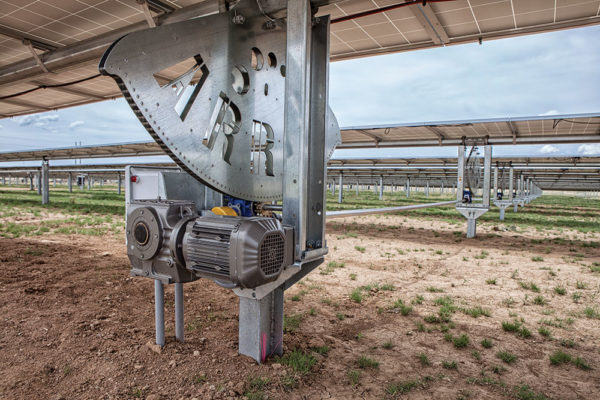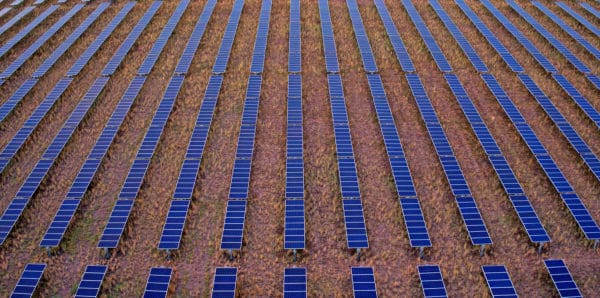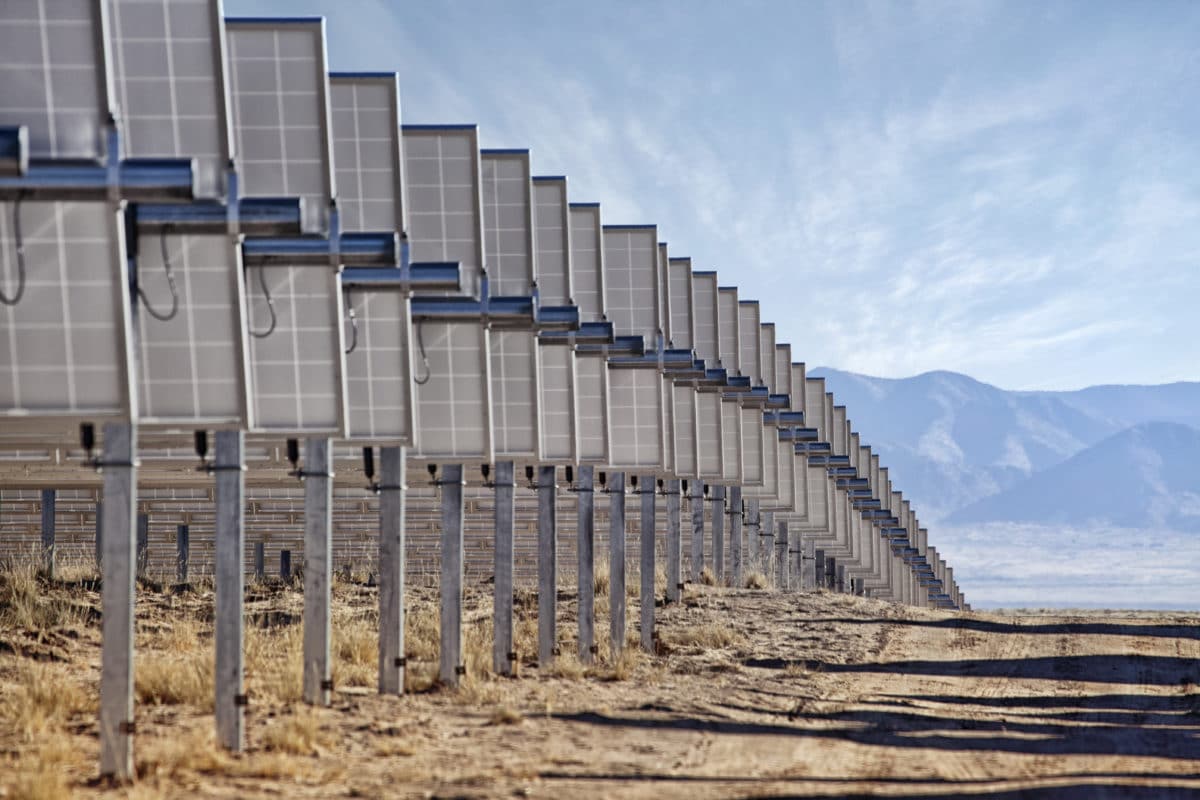Solar module cell size and module form factor as a whole have increased steadily, leading to module power ratings exceeding 600 W from a 60-cell PERC module.
The module mounting world, specifically the tracker industry, has had to adjust quickly to these new form factors. The changes that tracker companies must make can send ripple effects through a project and its economics.
Because trackers are tied to high-functioning and profitable solar sites, understanding the tied-in costs associated with different module weights and form factors will significantly impact planning for optimal project profitability.

Array Technologies
In an attempt to inform developers, EPCs, and module manufacturers about trends in module characteristics and how they impact tracker costs, Array Technologies and PV Evolution Labs (PVEL) released a new whitepaper, Larger PV Modules: Breaking Down Site-wide Costs.
13 modules
The report examined 13 modules from various manufacturers, and compared optimized tracker designs for each module. The study used relative tracker costs and module characteristics to determine the primary factors affecting tracker cost.
Tracker designs included in the study were based on Array’s DuraTrack HZ v3 product, although results generally apply to other horizontal single-axis solar tracker products with similar architecture. All of the included cases were evaluated with minimal snow/wind/ seismic load values and only full-row configurations were considered, no partial rows were included.
The intent of the study was to provide perspective into the module-tracker cost relationship for developers’ project roadmaps. It was written to offer a general look at how module tweaks and adjustments take monetary shape in tracker costs.
The study partners found a strong correlation between module length per weight ratio and lower tracker costs. This means that a longer, lighter module will regularly improve tracker cost per watt.

The report said this is because lower module weight allows for longer tracker rows. Longer rows are a frequent design goal for reducing tracker cost because they maximize tube span lengths and minimize the number of required foundations. Foundation count makes up a large part of the tracker cost stack.
Long modules also have more length in the East-West axis to generate power, so as modules are added to the tracker their power per unit length in the North-South axis is greater. Because of this, module length typically correlates to higher tracker row power, reducing tracker cost per watt.
Length and weight connection?
That conclusion naturally raises questions, as it seems to contradict itself. Would a longer module not also be heavier because of increased material?
“One of the bigger contributing factors to this is the thickness of the glass used [in the module].” Director of Applications Engineering at Array Technologies and co-author of the study, Cody Norman, told pv magazine. Norman said that thicker glass and heavier modules do not have a direct, linear correlation to tracker costs. However, greater module weights require more damping force in the tracker. That means either larger dampers or extra dampers have to be added to support the module’s weight.
Norman explained that as modules become more efficient, more watts per area are generated, improving the resulting cost per watt for the tracker. “I expect that extends to other primary components in the PV system, as well,” he said.
Structural supports
The long module correlation may not always hold true as hardware was analyzed under ideal conditions. The downside of long modules is that they increase the total module area supported by the tracker structure. In turn, this proportionally increases the tributary area of wind and snow pressure on the tracker structure. On sites with high design wind speeds or ground snow loads, a relatively long module will have higher tracker structure costs than a relatively short module.
Although longer module lengths over module weight seems to correlate well with reducing tracker costs per watt, as wind loads increase, Norman said, “your structure costs will increase faster.” He said that a longer module “is going to require more structural support as those wind speeds increase, compared to a smaller module, and that’s just because that module length turns directly into more area that’s increasing those forces on the structure.”
This article was updated June 18 to include illustrations and internal links.
This content is protected by copyright and may not be reused. If you want to cooperate with us and would like to reuse some of our content, please contact: editors@pv-magazine.com.









By submitting this form you agree to pv magazine using your data for the purposes of publishing your comment.
Your personal data will only be disclosed or otherwise transmitted to third parties for the purposes of spam filtering or if this is necessary for technical maintenance of the website. Any other transfer to third parties will not take place unless this is justified on the basis of applicable data protection regulations or if pv magazine is legally obliged to do so.
You may revoke this consent at any time with effect for the future, in which case your personal data will be deleted immediately. Otherwise, your data will be deleted if pv magazine has processed your request or the purpose of data storage is fulfilled.
Further information on data privacy can be found in our Data Protection Policy.